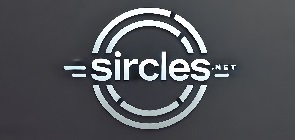
| Posted by: drdread - 26 June 2025 08:43:57 |
|---|
| I cannot install Windows 11 Pro on this HP PC even though I have performed a full diagnostic of RAM and storage..? |
| Posted by: sirclesadmin - 26 June 2025 08:44:38 |
|---|
|
The Let's fix this methodically: Immediate Steps to Try First1. Unplug All Unnecessary USB DevicesOnly keep:
Remove: Wi-Fi dongles, hubs, external drives, etc. 2. Change USB Port
3. Recreate Installation MediaUse Rufus to create the installer. Choose:
Rufus is better than the standard Media Creation Tool if you're seeing USB errors. 4. BIOS TweaksEnter BIOS (usually
If Installing from USB, but Error Persists:
Advanced Option (Driver Injection):If you're on a device with non-standard USB drivers, try this:
Still Stuck? Here's a Plan:If the AcePC has onboard eMMC or soldered SSD, and your USB setup keeps failing:
Would you like help creating a pre-patched ISO or step-by-step injecting the drivers? If you can tell me the exact model of the AcePC, I can find the right USB chipset drivers for it. |
| Posted by: drdread - 26 June 2025 08:46:07 |
|---|
| No this is just a standard HP Pro 3500 MT |
| Posted by: sirclesadmin - 26 June 2025 08:47:14 |
|---|
|
Thanks - that helps a lot. The HP Pro 3500 Microtower (MT) is a bit older (typically ships with 3rd-gen Intel CPUs like i3/i5-3xxx), and doesn't officially support Windows 11 due to:
But you can still install Windows 11 on it - with a few tweaks. The Fix Strategy for HP Pro 3500 MTStep 1: Rebuild USB Installer (Bypass TPM & USB bugs)Use Rufus to create a compatible installer:
This avoids errors that occur because the HP 3500 lacks TPM 2.0 and Secure Boot. Step 2: BIOS SettingsEnter BIOS on boot (
Save and exit. Step 3: Try USB 2.0 PortThe 3500 MT has both USB 2.0 and USB 3.0 ports. Use one of the rear USB 2.0 ports for your installer. Avoid the front or blue-colored USB 3.0 ports. Step 4: Temporarily Remove USB DevicesDuring installation, only leave:
Unplug:
Optional (if it still fails):If you're still hitting the USB driver BSOD:
Final TipYou can always try installing Windows 11 via command line (DISM method) to avoid USB issues:
Would you like a pre-built, TPM-bypassed ISO or a driver injection template? I can walk you through either path. |